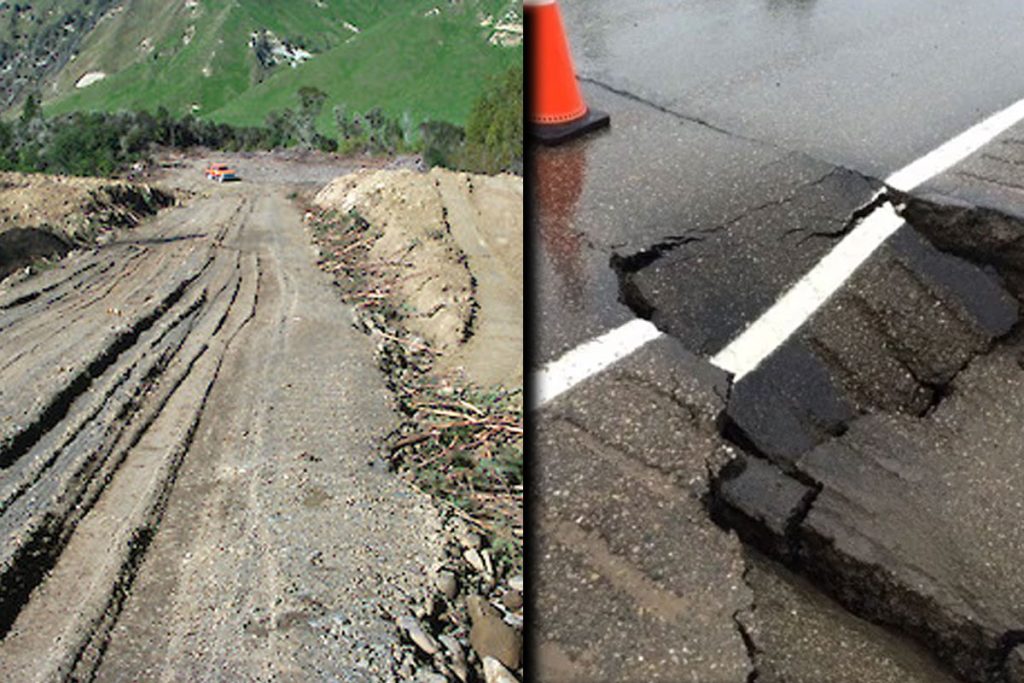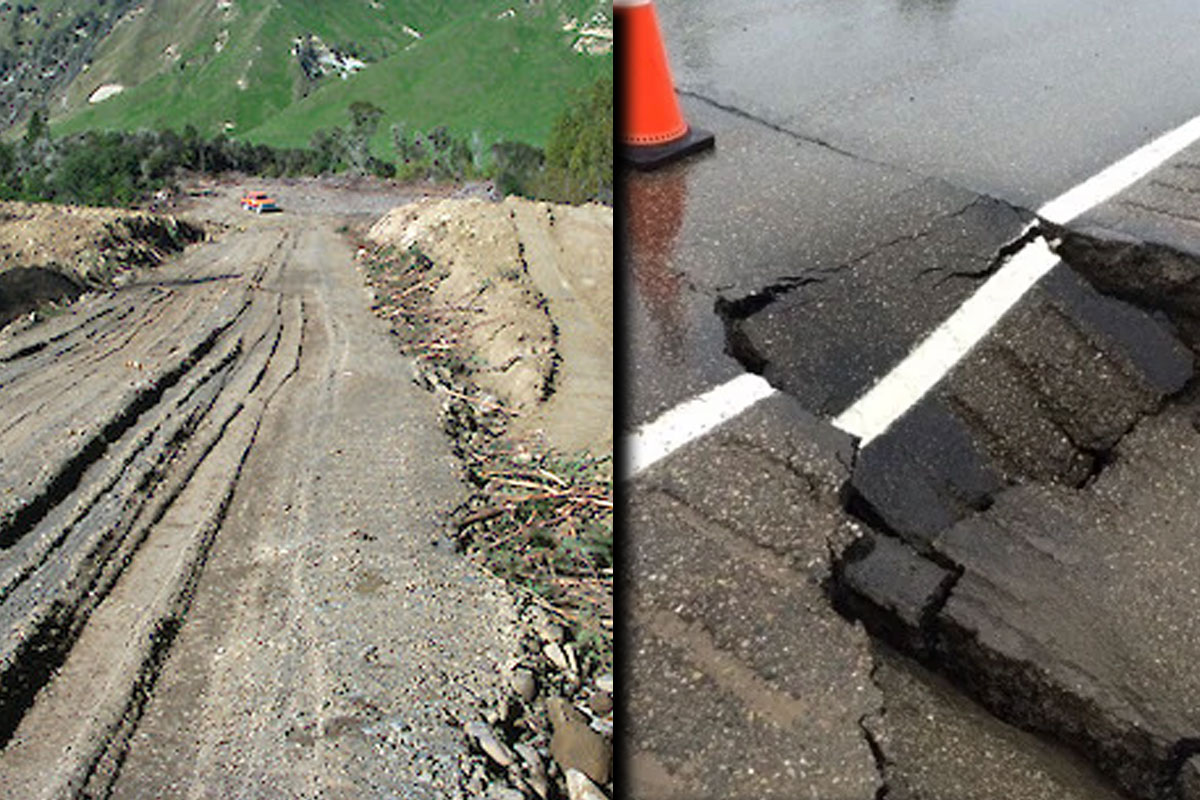Roadway Problems
Permanent roads carry larger traffic volumes and typically have asphalt or cement concrete surfacing over a base layer of aggregate. The combined surface and base layers act together to support and distribute traffic loading to the subgrade. Problems are usually encountered when the subgrade consists of soft clays, silts and organic soils. This type of subgrade is often water sensitive and, when wet, unable to adequately support traffic loads. If unimproved, the subgrade will mix with the road base aggregate – degrading the road structure – whenever the subgrade gets wet.

Poor roads often result from poor subgrades
Solutions Prior to Geosynthetics
As with unpaved roads, a problematic subgrade is typically excavated and replaced, or improved by the addition of cement, lime, or excess aggregate. In any case, the traditional solution was often costly and always time-consuming.
The Geosynthetic Solution
As was noted earlier, geosynthetics have proven to be the cost-effective alternative to traditional road construction methods. In paved roads, lateral restraint also called confinement is considered to be the primary function of the geosynthetic. With the addition of an appropriate geosynthetic, the Soil-Geosynthetic Aggregate (SGA) system gains stiffness. The stiffened SGA system is better able to provide the following structural benefits:
- Preventing lateral spreading of the base
- Increasing confinement and thus stiffness of the base
- Improving vertical stress distribution on the subgrade
- Reducing shear stress in the subgrade Geogrid base reinforcement stiffens the aggregate base layer providing long-term support for the paved surface.

Roadway installed with the use of geosynthetics
Geosynthetic Benefits
Geosynthetic Materials Association1 (GMA) review of geosynthetic base reinforcement identified the most common method for quantifying geosynthetic benefits as the determination of a Traffic Benefit Ratio (TBR). The TBR relates the ratio of reinforced load cycles to failure (excessive rutting) to the number of cycles that cause failure of an unreinforced road section. In general, geosynthetics have been found to provide a TBR in the range of 1.5 to 70, depending on the type of geosynthetic, its location in the road, and the testing scenario.
- Reference: Geosynthetic Materials Association https://geosynthetics.textiles.org/


